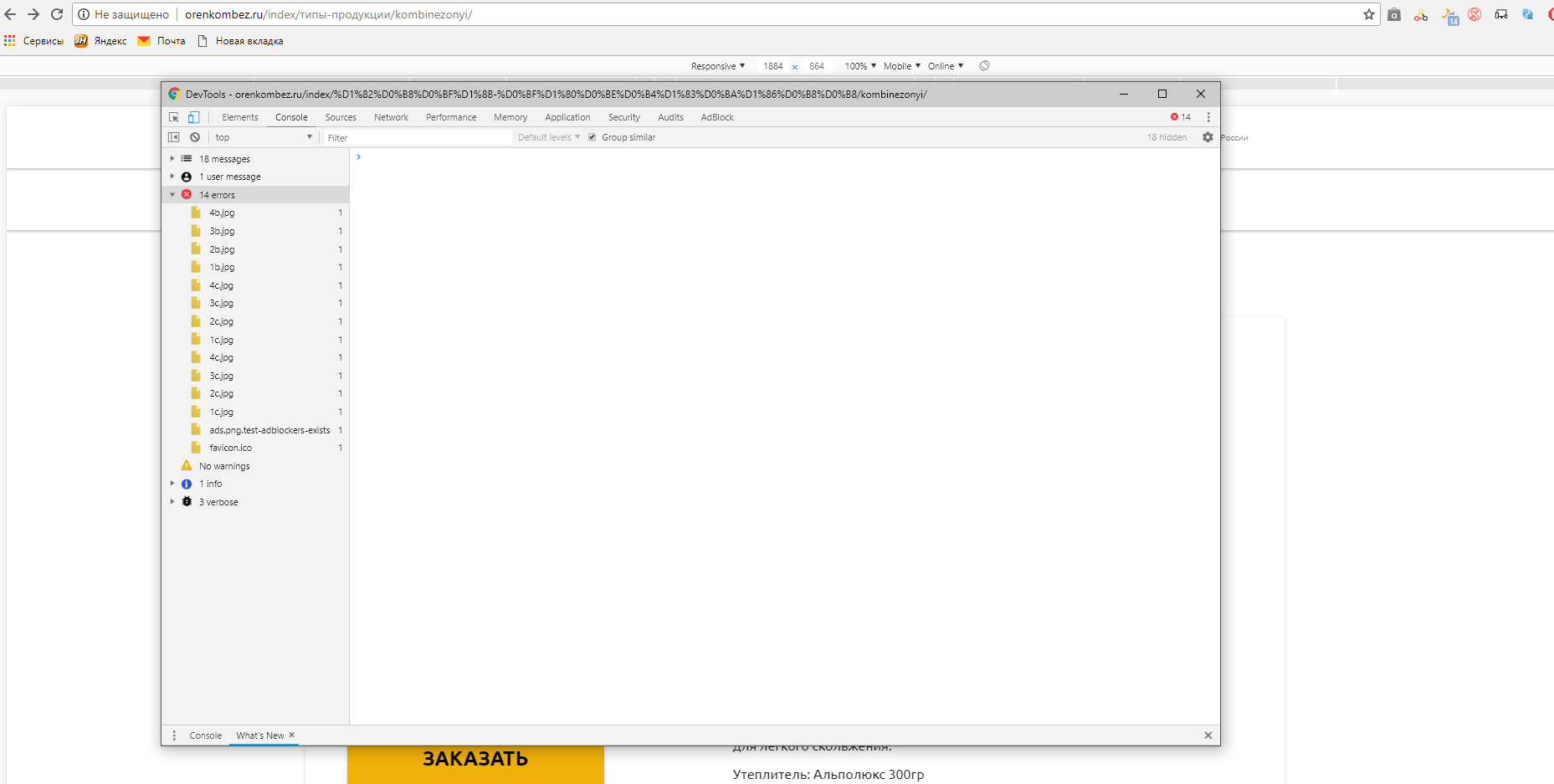 у меня такой ошибки нету. А что означает данная ошибка на вашем скрине
у меня такой ошибки нету. А что означает данная ошибка на вашем скрине <link rel="stylesheet" href="<?php bloginfo('stylesheet_url') ?>">
<link rel="shortcut icon" href="<?php bloginfo('template_url') ?>/img/favicon.ico" type="image/x-icon">
<script src="<?php bloginfo('template_url') ?>/js/util.js"></script>
<script src="<?php bloginfo('template_url') ?>/js/tab.js"></script>[2018-07-28 20:48:09] (ERROR @ /home/c10871/public_html/oknarem/core/xpdo/om/xpdoquery.class.php : 764) Encountered empty IN condition with key id
[2018-07-28 20:51:39] (ERROR @ /home/c10871/public_html/oknarem/core/xpdo/om/xpdoquery.class.php : 764) Encountered empty IN condition with key id
[2018-07-28 20:51:57] (ERROR @ /home/c10871/public_html/oknarem/core/xpdo/om/xpdoquery.class.php : 764) Encountered empty IN condition with key id# Rewrite www.domain.com -> domain.com -- used with SEO Strict URLs plugin
#RewriteCond %{HTTP_HOST} .
#RewriteCond %{HTTP_HOST} ^www.(.*)$ [NC]
#RewriteRule ^(.*)$ https://%1/$1 [R=301,L]
#
# or for the opposite domain.com -> www.domain.com use the following
# DO NOT USE BOTH
#
#RewriteCond %{HTTP_HOST} !^$
#RewriteCond %{HTTP_HOST} !^www\. [NC]
#RewriteCond %{HTTP_HOST} (.+)$
#RewriteRule ^(.*)$ https://www.%1/$1 [R=301,L] .
# Rewrite secure requests properly to prevent SSL cert warnings, e.g. prevent
# https://www.domain.com when your cert only allows https://secure.domain.com
#RewriteCond %{SERVER_PORT} !^443
#RewriteRule (.*) https://example-domain-please-change.com/$1 [R=301,L]
# Redirect the manager to a specific domain - don't rename the ht.access file
# in the manager folder to use this this rule
#RewriteCond %{HTTP_HOST} !^example-domain-please-change\.com$ [NC]
#RewriteCond %{REQUEST_URI} ^/manager [NC]
#RewriteRule ^(.*)$ https://example-domain-please-change.com/$1 [R=301,L]
# The Friendly URLs part
RewriteCond %{REQUEST_FILENAME} !-f
RewriteCond %{REQUEST_FILENAME} !-d
RewriteRule ^(.*)$ index.php?q=$1 [L,QSA]
# Make sure .htc files are served with the proper MIME type, which is critical
# for XP SP2. Un-comment if your host allows htaccess MIME type overrides.
#AddType text/x-component .htc
# If your server is not already configured as such, the following directive
# should be uncommented in order to set PHP's register_globals option to OFF.
# This closes a major security hole that is abused by most XSS (cross-site
# scripting) attacks. For more information: http://php.net/register_globals
#
# To verify that this option has been set to OFF, open the Manager and choose
# Reports -> System Info and then click the phpinfo() link. Do a Find on Page
# for "register_globals". The Local Value should be OFF. If the Master Value
# is OFF then you do not need this directive here.
#
# IF REGISTER_GLOBALS DIRECTIVE CAUSES 500 INTERNAL SERVER ERRORS :
#
# Your server does not allow PHP directives to be set via .htaccess. In that
# case you must make this change in your php.ini file instead. If you are
# using a commercial web host, contact the administrators for assistance in
# doing this. Not all servers allow local php.ini files, and they should
# include all PHP configurations (not just this one), or you will effectively
# reset everything to PHP defaults. Consult www.php.net for more detailed
# information about setting PHP directives.
#php_flag register_globals Off
# For servers that support output compression, you should pick up a bit of
# speed by un-commenting the following lines.
#php_flag zlib.output_compression On
#php_value zlib.output_compression_level 5
# The following directives stop screen flicker in IE on CSS rollovers. If
# needed, un-comment the following rules. When they're in place, you may have
# to do a force-refresh in order to see changes in your designs.
#ExpiresActive On
#ExpiresByType image/gif A2592000
#ExpiresByType image/jpeg A2592000
#ExpiresByType image/png A2592000
#BrowserMatch "MSIE" brokenvary=1
#BrowserMatch "Mozilla/4.[0-9]{2}" brokenvary=1
#BrowserMatch "Opera" !brokenvary
#SetEnvIf brokenvary 1 force-no-vary